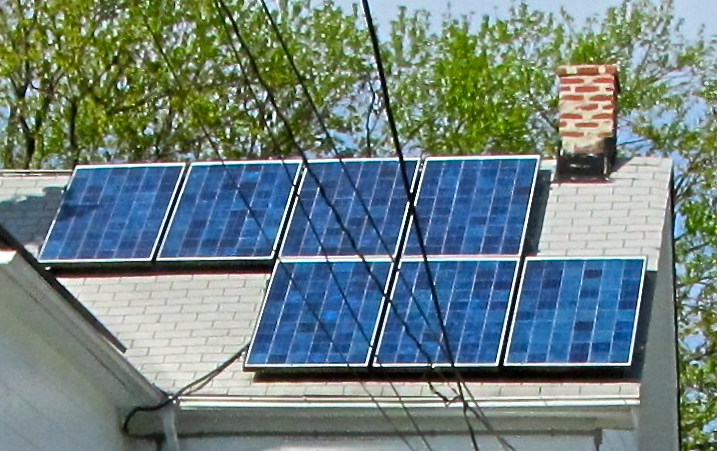Australia’s Catellaxy Files responds to a series of misleading pro-wind statements by pointing to the appropriate method of calculating electricity costs:
The first thing to understand – which The Conversation does not – is that electricity is not like pairs of shoes that can be sold at the same price tomorrow as today. The product consumers demand is not a quantity of megawatt hours but the continuous supply of electricity – its permanent availability to them in whatever quantity they require. This necessity for continuous supply places a premium on “despatchable” power from fossil-fuel, nuclear or hydro plants. This type of power is more valuable than power that cannot be controlled (wind, solar), and much more valuable than power that cannot even be predicted (especially wind). Moreover, power that is rapidly despatchable (hydro, some gas turbines) in response to sudden surges in demand or unexpected failures at other plants is more valuable still for its ability to plug gaps at short notice.
These differences in the value of different types of electricity already render The Conversation’s comparison of coal and wind power per megawatt hour useless. And rectifying its analysis is not, as pretended, just a matter of adding in “balancing costs” such as additional rapidly despatchable sources, extra storage capacity, or upgraded transmission equipment. For the insertion of a low-quality, unreliable source into the grid also reduces the efficiency and increases the cost of baseload power from coal or other sources which need to operate continuously to be efficient.
This leads to a second major unappreciated fact, which is that suppliers do not make economic decisions based on costs. Instead they make decisions based on the estimated difference between costs and revenue. If wind power can underbid baseload coal whenever the wind is blowing, existing coal stations won’t start up, and new ones won’t be built, because they cannot operate efficiently being turned on and off all the time, and therefore cannot generate enough revenue to justify operation or construction as the case may be. This in turn leads to a higher and higher percentage of unreliable power in the mix, with eventual blackouts.
The only way of assessing the true cost of wind and solar is to look at the overall electricity price before and after renewables are added to the mix. Once you do that you find overwhelming evidence from all over the world that markets with even modest shares of power from intermittent renewables have considerably higher prices than those without. That this is not a coincidence is confirmed by both the tightness of the correlation, and the equally impressive correlations over time within the same market – as the share of renewables increases, the price of electricity goes up, and it goes up very sharply with even 20-30% of nameplate capacity, or 5-10% of energy output, sourced from wind.
Although the discussion is about Australia’s wind power experiment, the details are also relevant to Ontario, as a recent study pointed out:
Electricity prices in Ontario have increased dramatically since 2008 based on a variety of comparative measures. Ontario’s electricity prices have risen by 71 percent from 2008 to 2016, far outpacing electricity price growth in other provinces, income, and inflation. During this period, the average growth in electricity prices across Canada was 34 percent.
Ontario’s electricity price change between 2015 and 2016 alone is also substantial: the province experienced a 15 percent increase in one year. This was two-and-a-half times greater than the national average of 6 percent during the same period.
From 2008 to 2015, electricity prices also increased two-and-a-half times faster than household disposable income in Ontario. In particular, the growth in electricity prices was almost four times greater than inflation and over four-and-a-half times the growth of Ontario’s economy (real GDP).
The large electricity price increases in Ontario have also translated to significant increases in monthly residential electricity bills. Between 2010 and 2016, monthly electricity bills (including tax) in major Canadian cities increased by an average of $37.68. During the same period, electricity bills in Toronto and Ottawa increased by $77.09 and $66.96, respectively. This means that residents in Toronto experienced electricity price increases of double the national average between 2010 and 2016.
In Toronto and Ottawa, the average monthly bills for residential consumers including taxes in 2016 were $201 and $183, respectively.
Much of the reason for Ontario’s much-higher-than-average electricity costs are the provincial government’s dodgy crony capitalist methods for increasing alternative energy sources in the power mix:
The problem of skyrocketing electricity prices and high bills is a made-in-Ontario problem directly tied to the provincial government’s policy choices. Ontario’s policies around renewable energy (wind, solar, and biomass) have resulted in large additional costs for consumers. More specifically, Ontario’s high electricity prices can be attributed to poorly structured long term contracts, the phase-out of coal energy, and a growing electricity supply and demand imbalance in the province that is resulting in Ontario exporting electricity at a loss.






